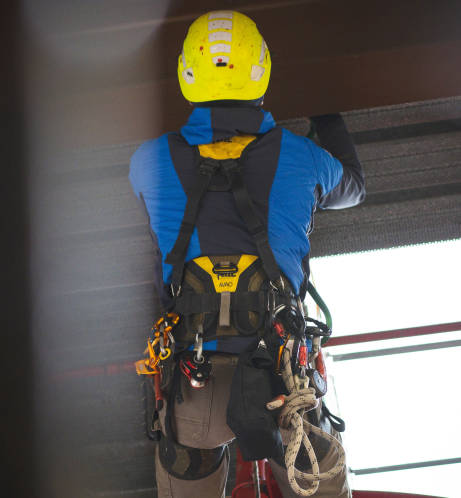Manufacturer’s Recommended Lifespan
Most safety harnesses come with a recommended service life of 3 to 5 years under normal working conditions. However, this lifespan depends heavily on the brand, materials used, frequency of use, and environmental conditions.
Light use, controlled environments: closer to the upper end (5 years).
Heavy use, harsh environments (construction, chemical exposure, extreme weather): lifespan may be shorter, sometimes less than 3 years.
Factors That Shorten the Lifespan
Exposure to UV light (sunlight damages webbing fibers).
Contact with chemicals, paint, or solvents.
Rough use with abrasions, cuts, or burns.
Improper storage (e.g., damp areas causing mold or corrosion).
When Should a Safety Harness Be Replaced?
Even if a harness has not reached its recommended lifespan, it must be immediately removed from service if:
It has been involved in a fall arrest incident.
There are visible signs of damage: fraying, cuts, broken stitching, rusted or deformed metal parts.
Labels are missing or unreadable, making inspection and compliance impossible.
The harness fails inspection during routine checks.
Tip: Many companies adopt a stricter policy of replacing harnesses every 3 years regardless of condition to minimize risk.
How to Maintain a Safety Harness

Proper maintenance and storage can significantly extend the usable life of a harness.
Daily Care
Inspect before each use: check straps, buckles, D-rings, and stitching.
Clean regularly: use mild soap and warm water; never use harsh chemicals or bleach.
Dry completely before storage to prevent mildew.
Storage Best Practices
Store in a cool, dry, clean environment away from direct sunlight.
Hang harnesses properly rather than leaving them on the ground.
Keep away from sharp objects, chemicals, or machinery.
Scheduled Inspections
User inspection: before each use.
Competent person inspection: at least every 6 months (more frequently for high-use environments).
Document all inspections in a safety log.
